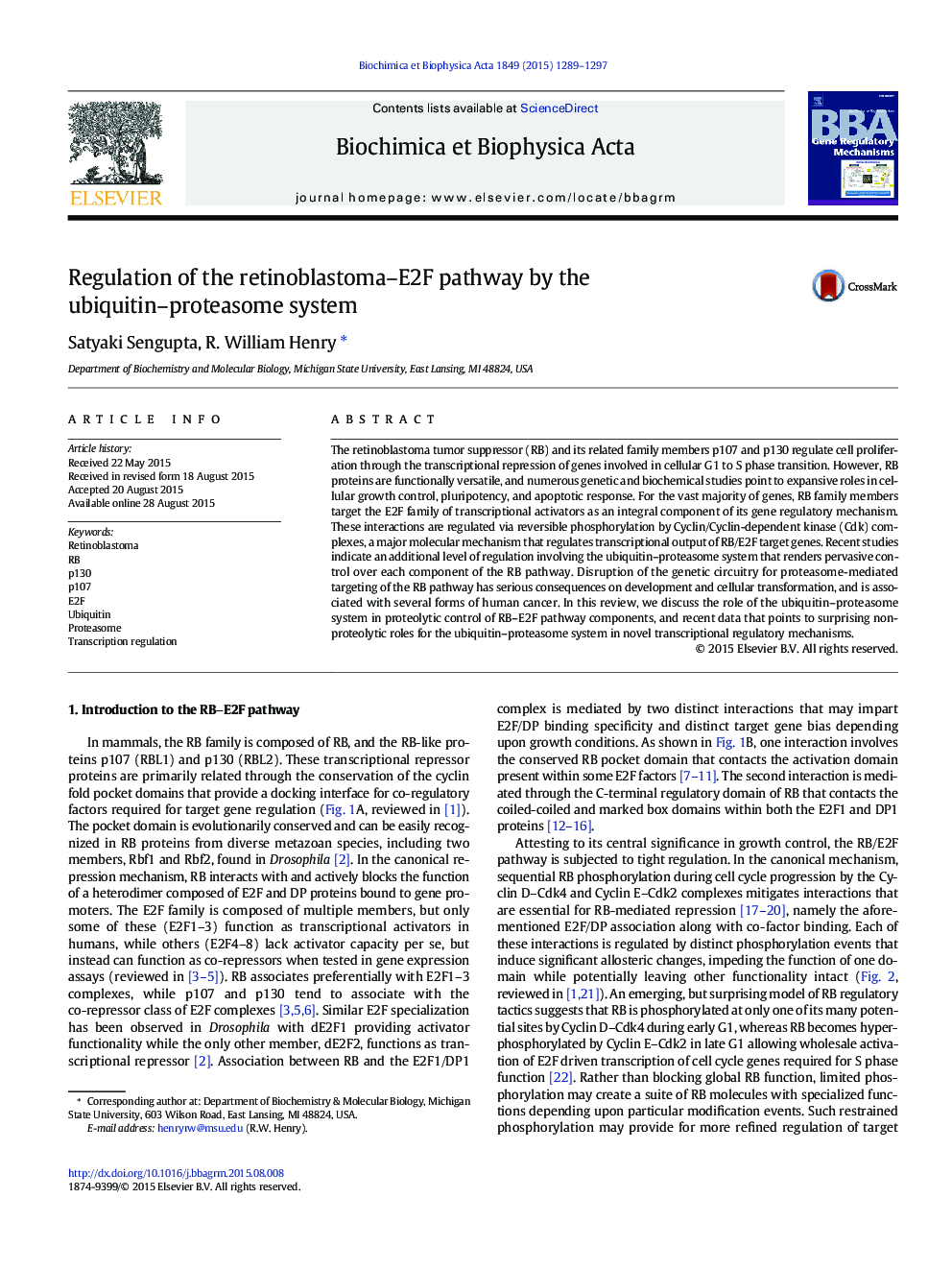| Article ID | Journal | Published Year | Pages | File Type |
|---|---|---|---|---|
| 1946375 | Biochimica et Biophysica Acta (BBA) - Gene Regulatory Mechanisms | 2015 | 9 Pages |
•The Retinoblastoma (RB) family of proteins governs cellular proliferation.•RB family activity is regulated by the ubiquitin–proteasome system.•Regulation involves both proteolytic and non-proteolytic mechanisms.
The retinoblastoma tumor suppressor (RB) and its related family members p107 and p130 regulate cell proliferation through the transcriptional repression of genes involved in cellular G1 to S phase transition. However, RB proteins are functionally versatile, and numerous genetic and biochemical studies point to expansive roles in cellular growth control, pluripotency, and apoptotic response. For the vast majority of genes, RB family members target the E2F family of transcriptional activators as an integral component of its gene regulatory mechanism. These interactions are regulated via reversible phosphorylation by Cyclin/Cyclin-dependent kinase (Cdk) complexes, a major molecular mechanism that regulates transcriptional output of RB/E2F target genes. Recent studies indicate an additional level of regulation involving the ubiquitin–proteasome system that renders pervasive control over each component of the RB pathway. Disruption of the genetic circuitry for proteasome-mediated targeting of the RB pathway has serious consequences on development and cellular transformation, and is associated with several forms of human cancer. In this review, we discuss the role of the ubiquitin–proteasome system in proteolytic control of RB–E2F pathway components, and recent data that points to surprising non-proteolytic roles for the ubiquitin–proteasome system in novel transcriptional regulatory mechanisms.
